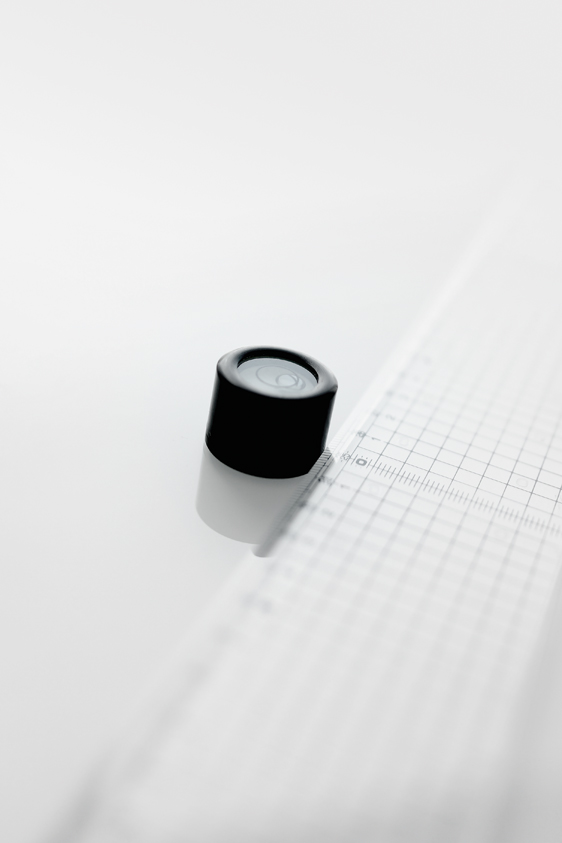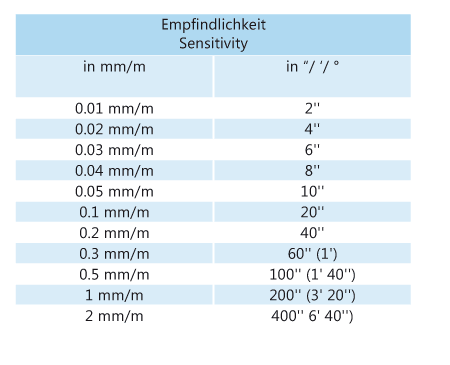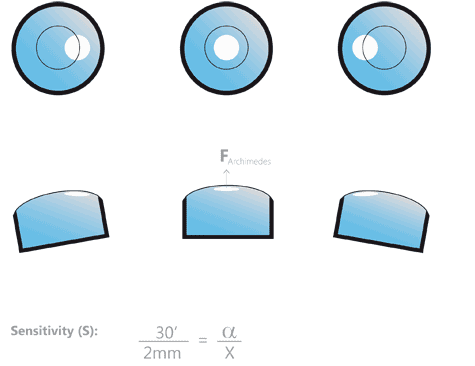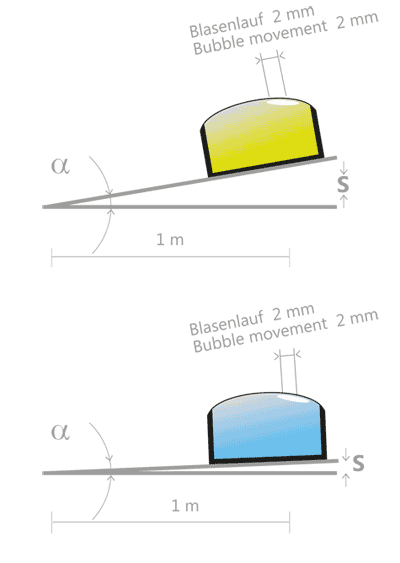
KNOW-HOW
SENSITIVITY
An air level is an empty chamber filled with fluid and a gas bubble used to check the horizontal or vertical position of an object. In other words, the size, direction and position of the gas bubble indicate the difference in angle of the object from a flat horizontal surface.
The measured value of the boxed circular air level is
a tilt angle.

FUNCTIONAL PRINCIPLE
The space containing the fluid and gas bubble has a defined radius on the top side. This ensures that the gas bubble always rises to the highest point. There are usually two markings on the transparent case, to the left and right of centre. If the gas bubble is posi-
tioned exactly between these two marks and the level is correctly set, the object being examined is completely horizontal or vertical.

Fig. 1: Spirit level A
Low sensitivity
e. g.. sensitivity of 1°
Fig. 2: Spirit level B
High sensitivity
e. g.. sensitivity of 20“
tan α = S / 1000 mm (Basic length 1m)

SENSITIVITY
The sensitivity of a level is defined as the inclination or change in angle (α) required to move the bubble a distance of 2 mm, e.g. 1°, 30‘ or 20‘‘. As such, a level with a sensitivity of 20‘‘ (Fig. 2) has a higher sensitivity than one with 1° (Fig. 1). The sensitivity is sometimes expressed in mm/m, or a difference in height (s) with respect to a defined distance of one meter.
A conventional spirit level used in construction usually has a sensitivity of approx. 40‘ – 50‘. Tube air levels for geodetic measuring tools usually have a sensitivity of 20‘‘ – 30‘‘. Most boxed circular air levels used in applications such as tripods or scales have a sensitivity of 5‘ – 30‘.
Any questions?
Please call us. We‘re always happy to help.
